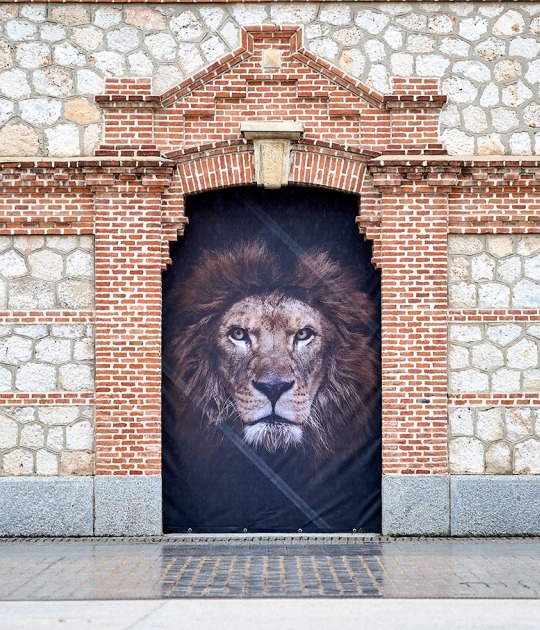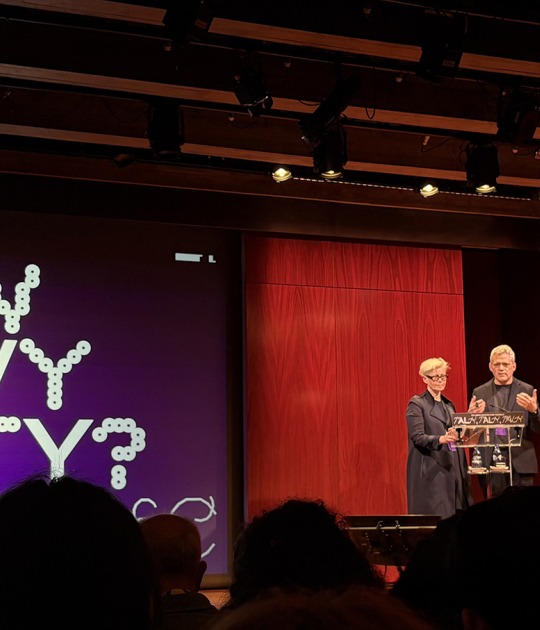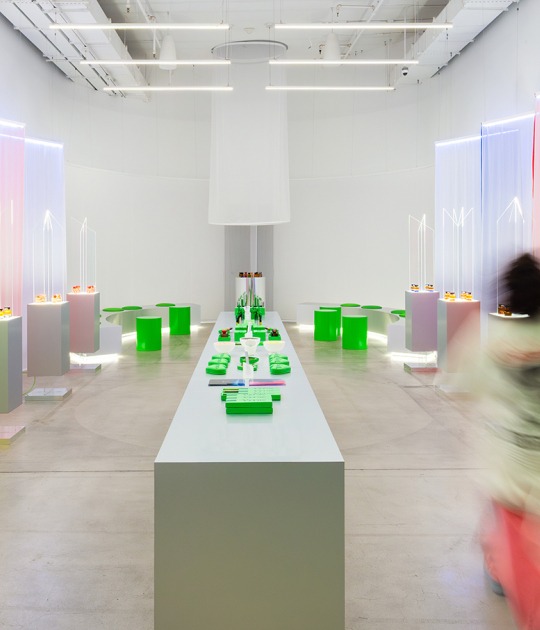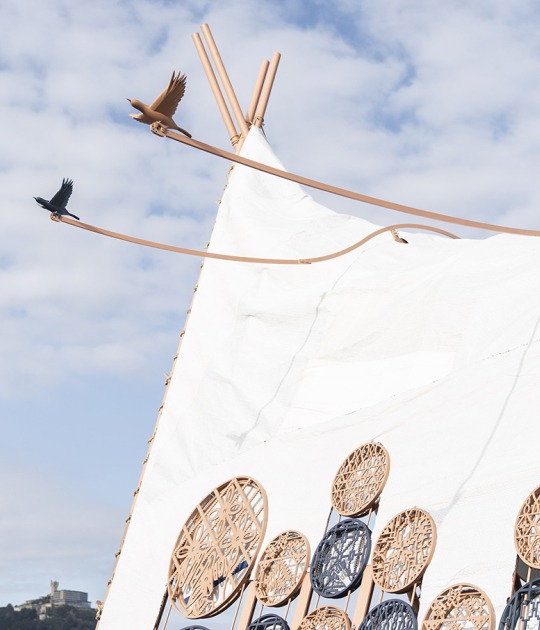Politics and Architecture, by Dietrich Neumann, shows much evidence points to enormous political tensions between the conservative German commissioner, Georg von Schnitzler, and the progressive government in Berlin, which had explicitly advised against a pavilion and did not provide funding for it. Von Schnitzler commissioned the pavilion anyway but ended up having to pay for much of it from his own funds. In a provocative manner, he defied government directives and raised both the current flag of the Weimar Republic (black, red, and gold) and the one he preferred, the banished flag of the former Kaiserreich (black, white, and red) in front of the Pavilion.
Similarly, the German Pavilion was inaugurated without the inscription "Alemania" in front, which did not appear until months later.
In turn, the Berlin government boycotted the opening ceremony, which was attended by the Spanish royal family and dictator Primo de Rivera, but no high-ranking German politicians.
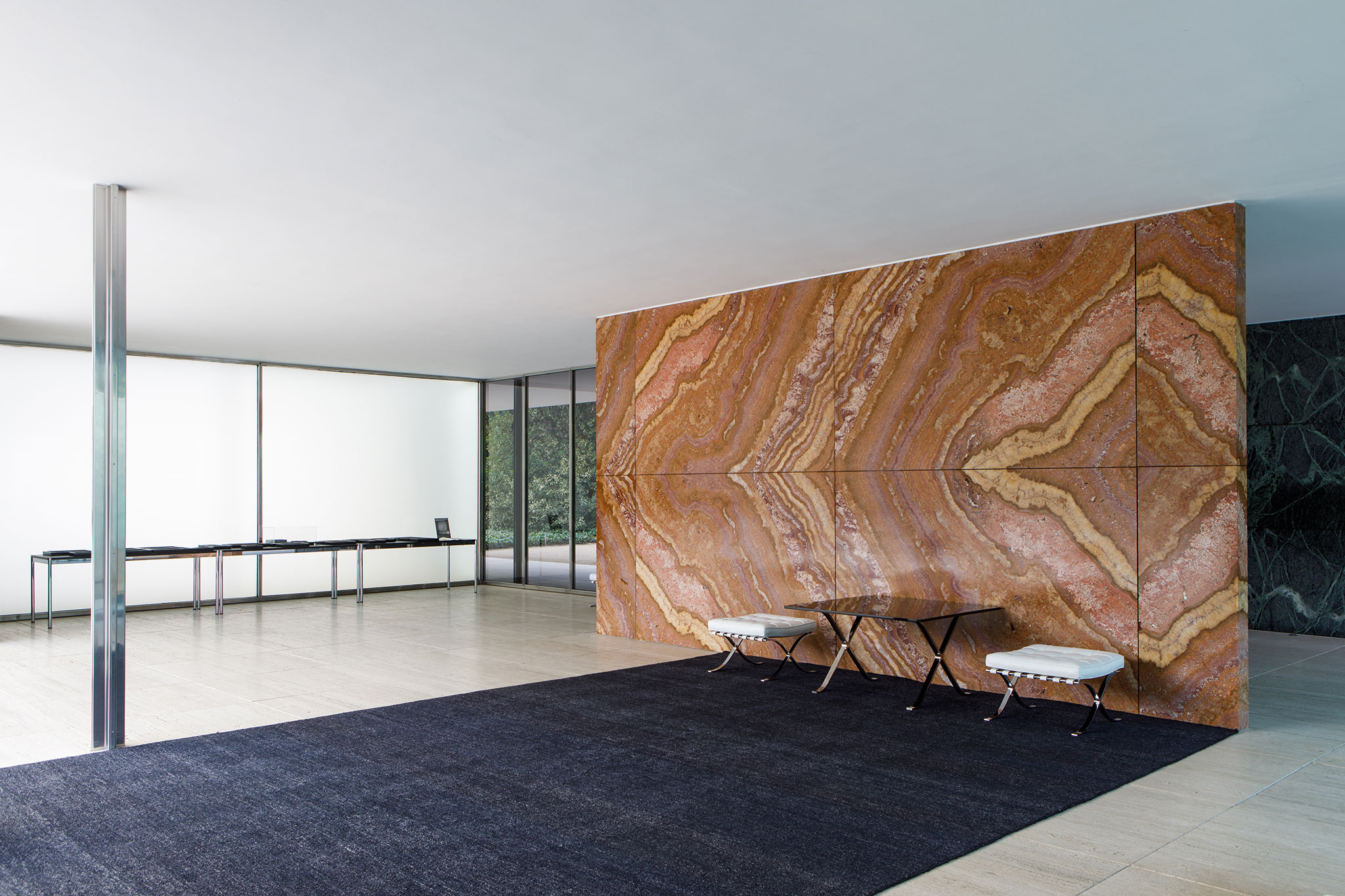
Politics and Architecture by Dietrich Neumann. Photograph by Anna Mas.
The interventions proposed by Neumann in the Pavilion – a new flag, the front inscriptions of the Pavilion, the table for the visitors' book devoid of the signatures of German dignitaries – as well as the production of a new publication of the same name that collects scientific research and the photographs on which he has based the research, invite us to find in the Pavilion some elements that were there before, others allude to and reflect on the weight of symbols and the precariousness of their historical interpretations.
In turn, the Berlin government boycotted the opening ceremony, which was attended by the Spanish royal family and dictator Primo de Rivera, but no high-ranking German politicians.

Politics and Architecture by Dietrich Neumann. Photograph by Anna Mas.
The interventions proposed by Neumann in the Pavilion – a new flag, the front inscriptions of the Pavilion, the table for the visitors' book devoid of the signatures of German dignitaries – as well as the production of a new publication of the same name that collects scientific research and the photographs on which he has based the research, invite us to find in the Pavilion some elements that were there before, others allude to and reflect on the weight of symbols and the precariousness of their historical interpretations.
“While our interventions make the Pavilion's replica more complete, they also render its history and meaning more complicated.”
“Seeing the Pavilion between the two flags shows its position on the fence - somewhere between modernity and conservatism.”
“Seeing the Pavilion between the two flags shows its position on the fence - somewhere between modernity and conservatism.”
In the words of Dietrich Neumann.
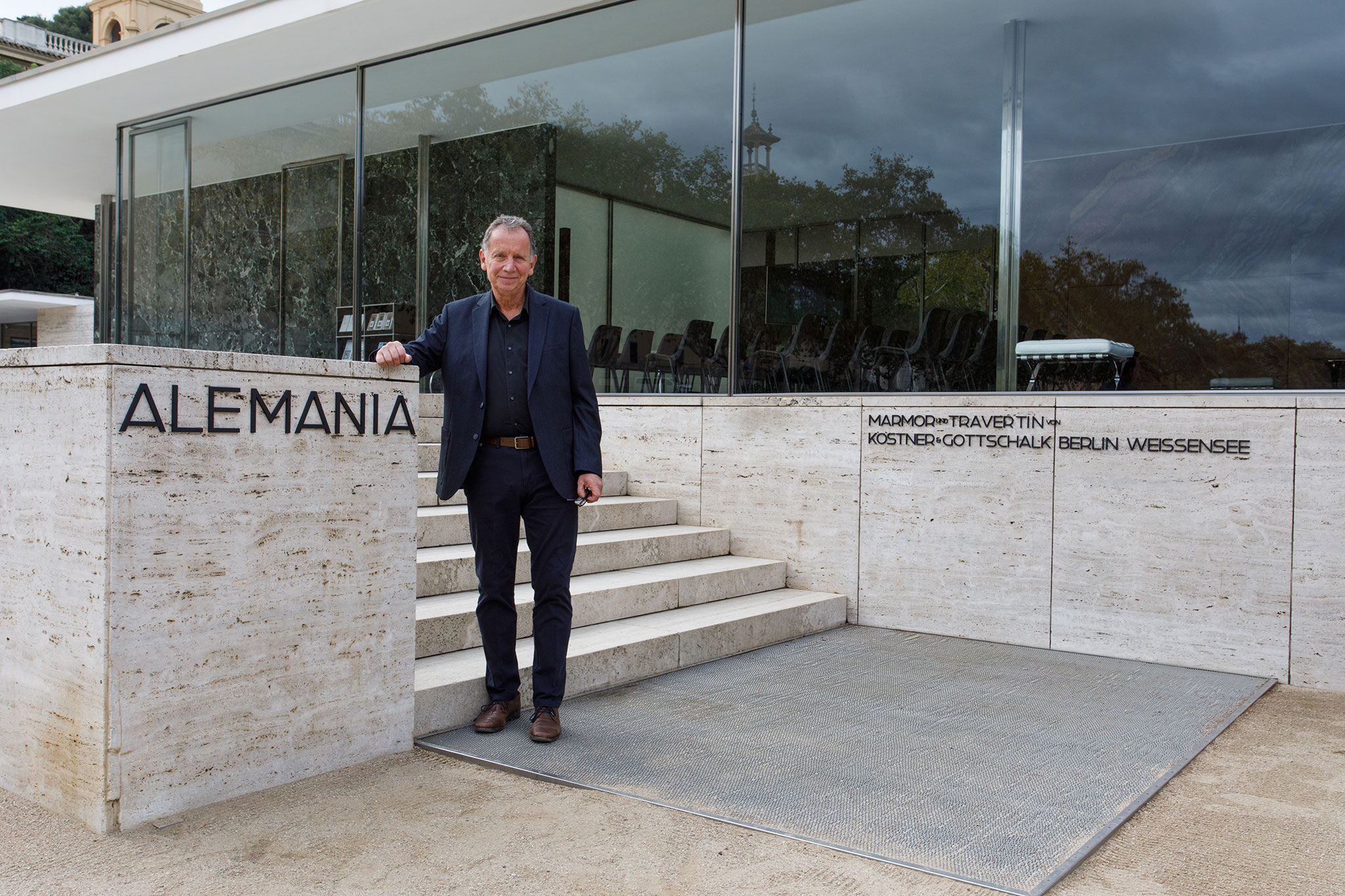
Politics and Architecture by Dietrich Neumann. Photograph by Anna Mas.
Dietrich Neumann already lectured at our 2016 symposium on the figure of Mies van der Rohe and the German Pavilion at the Barcelona International Exhibition of 1929. and wrote a chapter in the publication “Mies van der Rohe. Barcelona 1929.″ His publications “An Accidental Masterpiece” and “The Barcelona Pavilion by Mies van der Rohe. One Hundred Texts since 1929”; which follow similar lines of inquiry regarding the political and architectural context of 1929 in Germany and Spain, as well as the Pavilion’s reception history were also presented at the Pavilion in 2021. And now this intervention is accompanied by a new publication "Politics and Architecture" with the scientific texts, documents, and images that support it.























